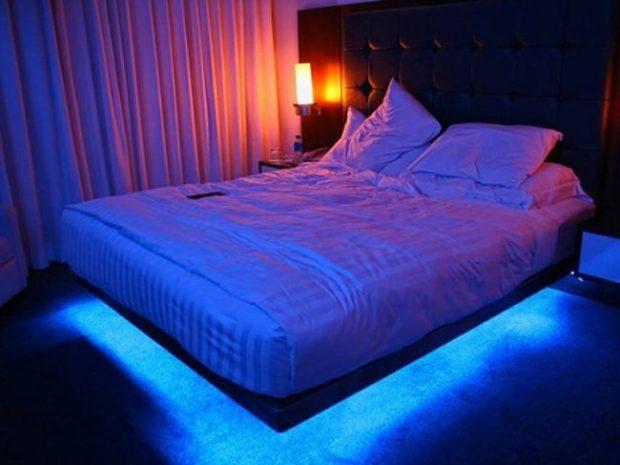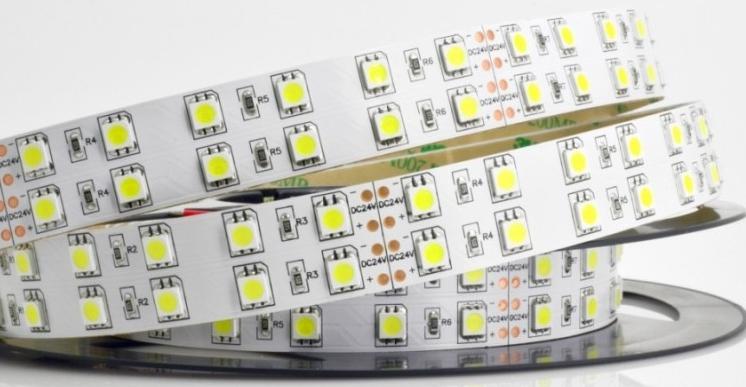Connecting Dimmer to LED Strip
Dimmer (to dim) is a process of dimming - manually or automatically. For lighting fixtures of different design, this procedure is carried out in different ways.
Adjusting the brightness of LED lights
The parameter that determines the intensity of LED light sources is the current. Therefore, dimming LED-devices comes down to a change in the current flowing through the light-emitting elements.
Features of dimming LED-lamps
LED lamps Are built according to different circuits. The difference comes down to ways to stabilize (or just limit) the current through the LED. The approach to adjusting the intensity of luminescence is also different:
- With simple inexpensive lamps, the current through the radiating element is limited by a resistor. In this case, dimming is easily accomplished by changing the value of the external voltage. The higher it is, the more current through the LED, the brighter it glows. Another way to regulate is PWM. Here the average current through the crystal per unit of time is regulated.
- Many lamps have an electronic current regulator built in - driver. Its task is to keep the current through the LEDs unchanged, despite changes in the external voltage. Obviously, there is no point in dimming by adjusting the input parameters: the driver will still try to keep the current stable.
- There are lamps where the dimming function is the responsibility of the driver. It can change the current through the LED depending on the external command.
Therefore, it is important for the consumer to know how to control the intensity of such a lamp. On the packages you can see the label "dimmable".

Brightness control of LED strips
LED strips are built in the form of bars-modules, each containing one or more LEDs and a ballast resistor. These segments can be connect in parallel. No electronic devices to stabilize current, so the brightness can be controlled by changing the current through the LED by adjusting the supply voltage. That's why there is no such thing as a non-dimmable belt.. Although in the characteristics of the lighting device is often written "dimmable LED strip," it's just a ploy by marketers to attract consumers.
Ways to adjust the brightness of the LED strip
The easiest way to control the brightness of the lighting fixture is to include in series in series with it a variable resistor. It will redistribute the voltage drop between it and the strip, thereby regulating the current through the elements. This method is cheap and simple, but a lot of power is uselessly dissipated on the potentiometer.
Another method is to install an autotransformer on the 220 V side of the power supply. This transformer is bulky, expensive and unreliable.

The most common way to regulate the intensity of the glow - the use of special devices - dimmers. They regulate the average current through the LEDs by adjusting the average voltage using pulse-width modulation (PWM).

The peculiarity of this way is the absence of power redistribution between the key element and the load - energy is supplied in metered portions. The brightness is averaged out due to the inertia of human vision.
Low-voltage ribbon control
Pulse voltage for 12...36 volt luminaires, modulated by the pulse width, is formed by means of microcircuits. Timers are used for manually controlled dimmers. For example, the widespread chip 555. It generates a sequence of pulses, the duty cycle of which can be adjusted with a potentiometer. The pulses control a powerful switch on a field-effect transistor, which regulates the average current through the LED strip.
If the dimmer assumes a higher level of service, the average current regulator is built on a microcontroller or a specialized chip. This is how devices with remote control or adaptive illumination that changes according to the ambient light are made.

Important! When choosing any dimmer it is necessary to pay attention to the determining parameters - operating voltage and the maximum load capacity of the dimmer. They must meet the characteristics of the lighting fixture that is supposed to connect.
Working voltage for common types of lighting fixtures is given in the table below.
| Device type | RT-5000 3528 | RT-5000 2x3528 | ULTRA-5000 5630 | ULTRA-5000 2x5630 | RS-5000 335 | RS-5000 2x335 |
| Supply voltage, V | 12 | 12, 24, 36 | 12 | 24 | 12 | 12, 24 |
Dimming of ribbons on 220V
The dimming of LED equipment powered from 220 V is based on the same principles, but the implementation is slightly different. More powerful and high-voltage elements, including triacs, are used as control switches.

Connecting such a dimmer to the LED strip and regulation is done before rectification. The control circuit "slices" chunks of a sine wave of the desired width, forming an average voltage. Then it is rectified, filtered (averaging occurs in the filter, so no additional flicker reduction measures need to be applied) and fed to the LED strip.

Types of dimmers and installation options
The average consumer is not very interested in how the dimming process takes place. Most users need information about the consumer properties of dimmers, the level of comfort they can provide and how they fit into the interior. According to these properties dimmers can be:
- Devices with manual control. Similar to an ordinary light mains switch, only equipped with a rotary knob. Mounted on the wall in place of light switches.
- Dimmers with manual adjustment, equipped with touch control and LCD display. Have extended service options - timers, presetting scenarios, etc. Are noticeably more expensive.
- Light dimmers with remote control. Can be controlled with remote control (similar to TV remote control etc.). Communication is via infrared or radio. Dimmers according to the second variant are easier to hide behind the interior elements. For example, it is possible to install them behind the suspended ceilings, and then connect the LED lighting fixture.
- Dimming RGB-tapes take place in the process of adjusting color and creating special effects with the help of controllers.
In most cases, dimmers are combined with power switches for LED lights.
In the conclusion of the video: Modern ways of dimming LED strips.
Install and connect the dimmer yourself is not difficult. But it is necessary to remember that for different types of lighting devices are used different ways to adjust the brightness. Dimmer designed for halogen fixtureswill not be suitable for regulating the intensity of LED-lights.



